#united states antarctic program
Text
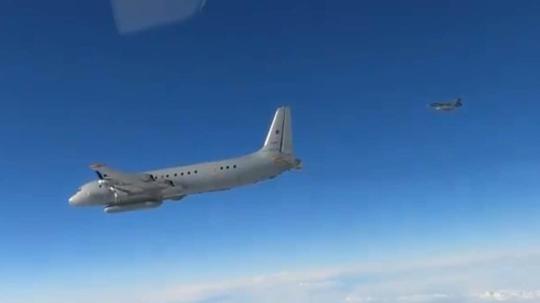
VIDEO: France intercepts Russian Il-20 aircraft off the coast of Estonia
Fernando Valduga By Fernando Valduga 02/27/2024 - 22:53in Interceptions, Military
France stated that one of its Mirage 2000-5 fighters intercepted a Russian Il-20 reconnaissance and surveillance plane off the coast of Estonia.
The brief statement said that the French Air Force's Mirage 2000 jet had been triggered and intercepted the Il-20 aircraft off the coast of Estonia, with "the objective: to protect the airspace of our Baltic allies," added the General Staff of the French Armed Forces, without going into details.
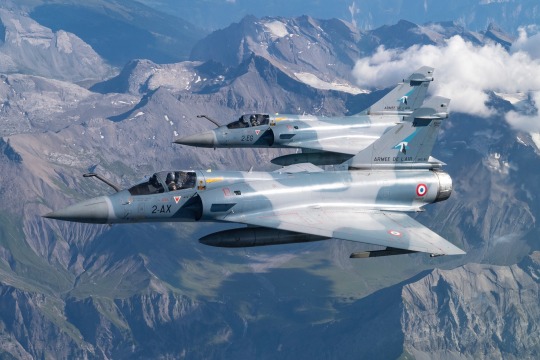
French military aircraft are deployed in some NATO member states as part of a mission called NATO Air Policing, which aims to maintain the security of the Alliance's airspace. These missions were reinforced after the large-scale invasion of Ukraine by Russia in February 2022.
Since then, there have been several aircraft interceptions that have not resulted in any serious incident. In March 2023, for example, a Russian aircraft forced the crash of an American Reaper drone in the Black Sea.
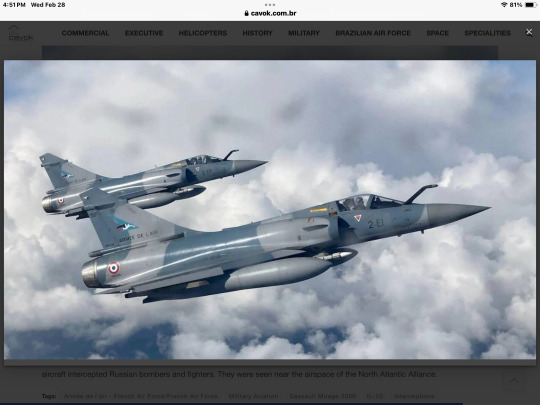
Last week, French Defense Minister Sébastien Lecornu said that Russian forces threatened to shoot down French AWACS aircraft that patrolled international airspace over the Black Sea last month.
The Russians repeatedly used their aircraft for provocations. In August last year, American air defense systems detected four Russian military aircraft near Alaska.
In the same month, the Danish Air Force intercepted two Russian bombers flying towards NATO territory. Recently, Norwegian F-35 aircraft intercepted Russian bombers and fighters. They were seen near the airspace of the North Atlantic Alliance.
Tags: Armée de l'air - French Air Force/French Air ForceMilitary AviationDassault Mirage 2000IL-20InterceptionsNATO - Air Police MissionRussia
Sharing
tweet
Fernando Valduga
Fernando Valduga
Aviation photographer and pilot since 1992, he has participated in several events and air operations, such as Cruzex, AirVenture, Dayton Airshow and FIDAE. He has works published in specialized aviation magazines in Brazil and abroad. He uses Canon equipment during his photographic work in the world of aviation.
Related news
INCIDENTS
B-52 bomber makes emergency landing after engine fire
27/02/2024 - 21:27
HELICOPTERS
United Kingdom: New Medium Helicopter Program (NMH) reaches the next phase of the competition
27/02/2024 - 19:58
BRAZILIAN AIR FORCE
FAB: 1º GTT provides logistical support to the Brazilian Antarctic Program
27/02/2024 - 19:31
MILITARY
IMAGES: RAF Poseidon aircraft performs training in Iceland
27/02/2024 - 16:00
MILITARY
Pyka delivers large-scale autonomous electric cargo aircraft Pelican Cargo to AFWERX
27/02/2024 - 14:00
MILITARY
Airbus and ST Engineering will establish MRO hub for C295 in Singapore
2 notes
·
View notes
Text
Events 8.24 (after 1930)
Jews are forced to flee the city.
1931 – Resignation of the United Kingdom's Second Labour Government. Formation of the UK National Government.
1932 – Amelia Earhart becomes the first woman to fly across the United States non-stop (from Los Angeles to Newark, New Jersey).
1933 – The Crescent Limited train derails in Washington, D.C., after the bridge it is crossing is washed out by the 1933 Chesapeake–Potomac hurricane.
1936 – The Australian Antarctic Territory is created.
1937 – Spanish Civil War: the Basque Army surrenders to the Italian Corpo Truppe Volontarie following the Santoña Agreement.
1937 – Spanish Civil War: Sovereign Council of Asturias and León is proclaimed in Gijón.
1938 – Kweilin incident: A Japanese warplane shoots down the Kweilin, a Chinese civilian airliner, killing 14. It is the first recorded instance of a civilian airliner being shot down.
1941 – The Holocaust: Adolf Hitler orders the cessation of Nazi Germany's systematic T4 euthanasia program of the mentally ill and the handicapped due to protests, although killings continue for the remainder of the war.
1942 – World War II: The Battle of the Eastern Solomons. Japanese aircraft carrier Ryūjō is sunk, with the loss of seven officers and 113 crewmen. The US carrier USS Enterprise is heavily damaged.
1944 – World War II: Allied troops begin the attack on Paris.
1949 – The treaty creating the North Atlantic Treaty Organization goes into effect.
1950 – Edith Sampson becomes the first black U.S. delegate to the United Nations.
1951 – United Air Lines Flight 615 crashes near Decoto, California, killing 50 people.
1954 – The Communist Control Act goes into effect, outlawing the Communist Party in the United States.
1954 – Vice president João Café Filho takes office as president of Brazil, following the suicide of Getúlio Vargas.
1963 – Buddhist crisis: As a result of the Xá Lợi Pagoda raids, the US State Department cables the United States Embassy, Saigon to encourage Army of the Republic of Vietnam generals to launch a coup against President Ngô Đình Diệm if he did not remove his brother Ngô Đình Nhu.
1967 – Led by Abbie Hoffman, the Youth International Party temporarily disrupts trading at the New York Stock Exchange by throwing dollar bills from the viewing gallery, causing trading to cease as brokers scramble to grab them.
1970 – Vietnam War protesters bomb Sterling Hall at the University of Wisconsin–Madison, leading to an international manhunt for the perpetrators.
1981 – Mark David Chapman is sentenced to 20 years to life in prison for murdering John Lennon.
1989 – Colombian drug barons declare "total war" on the Colombian government.
1989 – Tadeusz Mazowiecki is chosen as the first non-communist prime minister in Central and Eastern Europe.
1991 – Mikhail Gorbachev resigns as head of the Communist Party of the Soviet Union.
1991 – Ukraine declares itself independent from the Soviet Union.
1992 – Hurricane Andrew makes landfall in Homestead, Florida as a Category 5 hurricane, causing up to $25 billion (1992 USD) in damages.
1995 – Microsoft Windows 95 was released to the public in North America.
1998 – First radio-frequency identification (RFID) human implantation tested in the United Kingdom.
2001 – Air Transat Flight 236 loses all engine power over the Atlantic Ocean, forcing the pilots to conduct an emergency landing in the Azores.
2004 – Ninety passengers die after two airliners explode after flying out of Domodedovo International Airport, near Moscow. The explosions are caused by suicide bombers from Chechnya.
2006 – The International Astronomical Union (IAU) redefines the term "planet" such that Pluto is now considered a dwarf planet.
2016 – An earthquake strikes Central Italy with a magnitude of 6.2, 2016 – Proxima Centauri b, the closest exoplanet to Earth, is discovered by the European Southern Observatory.
2017 – The National Space Agency of Taiwan successfully launches the observation satellite Formosat-5 into space.
0 notes
Text
Top 5 @Wikipedia pages from a year ago: Saturday, 25th March 2023
Welcome, bienvenido, bem-vindo, croeso 🤗
What were the top pages visited on @Wikipedia (25th March 2023) 🏆🌟🔥?

1️⃣: Website
"A website (also written as a web site) is a collection of web pages and related content that is identified by a common domain name and published on at least one web server. Websites are typically dedicated to a particular topic or purpose, such as news, education, commerce, entertainment, or social..."

Image by United States Antarctic Program
2️⃣: John Wick: Chapter 4
"John Wick: Chapter 4 (released in Japan as John Wick: Consequences) is a 2023 American neo-noir action thriller film directed and co-produced by Chad Stahelski and written by Shay Hatten and Michael Finch. The sequel to John Wick: Chapter 3 – Parabellum (2019) and the fourth installment in the John..."
3️⃣: Donald Triplett
"Donald Gray Triplett (September 8, 1933 – June 15, 2023) was an American banker known for being the first person diagnosed as autistic. He was first diagnosed by Leo Kanner in 1943, and was labeled as "Case 1". Triplett was noted for his savant abilities, particularly the ability to name musical..."
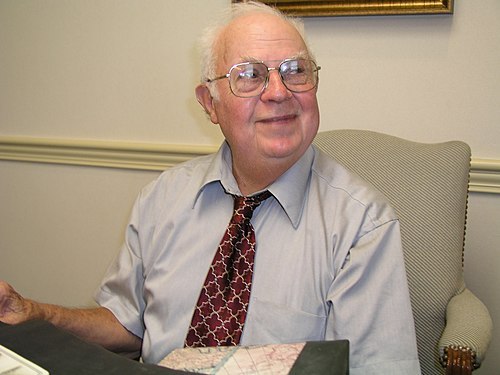
Image licensed under CC BY-SA 4.0? by Ylevental
4️⃣: ChatGPT
"ChatGPT (Chat Generative Pre-trained Transformer) is a chatbot developed by OpenAI and launched on November 30, 2022. Based on a large language model, it enables users to refine and steer a conversation towards a desired length, format, style, level of detail, and language. Successive prompts and..."

Image by
Original:
OpenAI
Vector:
Zhing Za
5️⃣: Cleopatra
"Cleopatra VII Thea Philopator (Koinē Greek: Κλεοπάτρα Θεά Φιλοπάτωρ lit. Cleopatra "father-loving goddess"; 70/69 BC – 10 August 30 BC) was Queen of the Ptolemaic Kingdom of Egypt from 51 to 30 BC, and its last active ruler. A member of the Ptolemaic dynasty, she was a descendant of its founder..."

Image by Louis le Grand
0 notes
Link
4 Min Read NASA C-130 Makes First-Ever Flight to Antarctica for GUSTO Balloon Mission NASA's Wallops Flight Facility C-130 aircraft delivered the agency’s Galactic/Extragalactic ULDB Spectroscopic Terahertz Observatory (GUSTO) payload to McMurdo Station, Antarctica, on Oct. 28, 2023. The GUSTO mission will launch on a scientific balloon in December 2023. Credits: NASA/Scott Battaion On Oct. 28, 2023, NASA’s C-130 Hercules and crew safely touched down at McMurdo Station, Antarctica, after an around-the-globe journey to deliver the agency’s Galactic/Extragalactic ULDB Spectroscopic Terahertz Observatory (GUSTO). The United States research station, operated by the National Science Foundation, is host to NASA’s Antarctic long-duration balloon campaign in which the GUSTO mission will take a scientific balloon flight beginning December 2023. The C-130 crew, which has now completed half of the 26,400-nautical-mile round-trip journey, first stopped at Fort Cavazos, Texas, on Oct. 17, to load the GUSTO observatory and members of its instrument team. Additional stops to service the aircraft and for crew rest included Travis Air Force Base (AFB), California; Hickman AFB, Hawaii; Pago Pago, American Samoa; and Christchurch, New Zealand, before finally reaching McMurdo, Antarctica – a mere 800 miles from the South Pole. Aircraft Office teams prepare the C-130 aircraft for departure at NASA’s Wallops Flight Facility in Virginia. The aircraft will deliver the agency’s Galactic/Extragalactic ULDB Spectroscopic Terahertz Observatory (GUSTO) payload to McMurdo Station, Antarctica. The GUSTO mission will launch on a scientific balloon in December 2023.NASA/Terry Zaperach GUSTO, part of NASA’s Astrophysics Explorers Program, is set to fly aboard a football-stadium-sized, zero-pressure scientific balloon 55 days and beyond, on a mapping mission of a portion of the Milky Way Galaxy and nearby Large Magellanic Cloud. A telescope with carbon, oxygen, and nitrogen emission line detectors will measure the interstellar medium, the cosmic material found between stars, and trace the full lifecycle of that matter. GUSTO’s science observations will be performed in a balloon launch from Antarctica to allow for enough observation time aloft, access to astronomical objects, and solar power provided by the austral summer in the polar region. NASA’s Wallops Flight Facility Aircraft Office in Wallops Island, Virginia, which manages the C-130, spent nearly a year in coordination efforts preparing for GUSTO’s trip to its launch site. From international clearances with agencies, cargo configurations with NASA’s Balloon Program Office, logistical support with the National Science Foundation at McMurdo, to specialized training on nontraditional navigation systems in Antarctica, the Aircraft Office developed an extensive plan to safely deliver the intricate science payload. The first-ever mission to Antarctica for the NASA C-130 aircraft presented several long-haul cargo flight challenges. Mission managers and NASA’s Office of International and Interagency Relations (OIIR) started early to stay ahead of coordination of international flight clearances. “We work very hard to make sure that we execute the mission at a high standard of technical competence and professionalism to maintain NASA’s international reputation,” said John Baycura, Wallops research pilot on the GUSTO mission. Large time-zone changes challenge the crew’s circadian rhythm. Ninety hours in flight across multiple time zones requires an extra pilot and flight engineer on the mission to share the workload. Mandatory crew rest days at strategic locations, per NASA policy, ensure the crew receives enough time to rest, adjust to the schedule, and proceed safely. Visit NASA’s Goddard Space Flight Center Flickr for more photos. Unexpected weather also tops the list of most pressing challenges for this type of flight. Oceanic crossings come with the added risk of weather complicated by no radar coverage over the ocean. The crew uses DOD and civilian weather agencies to identify hazardous weather and adjust flight routes, altitude, and timings accordingly. “For the specific case of McMurdo, while en route, we called the weather shop at McMurdo Station to get a forecast update before we reached our ‘safe return’ point. Using a conservative approach, we decided whether to continue to McMurdo Station or return to Christchurch and try again the next day,” said Baycura. For this mission, no commercial entities supported the final leg to Antarctica. U.S. Air Force C-17’s and the New York Air National Guard LC-130’s that typically transport to McMurdo Station had limited space in their schedules. By using NASA’s C-130 for this specialized cargo mission, “the balloon program gained a dedicated asset with a highly experienced crew and support team. This greatly reduced the standard project risks to schedule, cargo, and cost,” said Baycura. For more information, visit nasa.gov/wallops. Share Details Last Updated Oct 30, 2023 Editor Jamie Adkins Contact Olivia F. [email protected] Location Wallops Flight Facility Related Terms AeronauticsNASA AircraftScientific BalloonsWallops Flight Facility Explore More 4 min read NASA Technologies Receive Multiple Nods in TIME Inventions of 2023 Article 3 days ago 4 min read Aviones de movilidad aérea avanzada: un viaje suave en el futuro Article 4 days ago 3 min read NASA Retires UHF SmallSat Tracking Site Ops at Wallops Article 5 days ago
0 notes
Text
Preserving the Flow: A Water Conservation Crusade
Definitions
Story: A story is a sequence of events communicated through different media, whether words, images or performance, and can address any subject, real or imagined, in a variety of genres and styles.
Tale: It is typically a short narrative that relates a sequence of events, often involving characters and a plot that has a beginning and an end, which becomes more interesting as the story progresses. Usually these narratives are intended to leave a moral.
Science fiction: Also known as "speculative fiction," is a literary genre that focuses on the exploration of possible futures. It speculates on how technological advances may give rise to alternative life forms.
Story
On October 17, 2025, the greatest disaster for our race turned out: the Argentinean plant called "Atucha 1" blew up. As a result, the waste reached the Antarctic and invaded the Antarctic soil, contaminating it. In the Antarctic 70% of drinking water was stored and by this time... on the 30th of the same month, the world gave way. I immediately sought to mobilize with two friends Jack and Max to Florida, since it is a state that has a water storage that has been scale up in recent years. With this in mind, Jack got tickets for the cruise; in effect, we had to pass through the area known as the "Bermuda Triangle". When we arrived in that area, everything felt calm, but suddenly a storm started and a whirlpool began, which ended up dragging us away. Max shouted at the top of his lungs: "The ship is going to plunge into the whirlpool, release the boats and jump into the sea!”. However, everyone was suspicious and thought about staying on the boat, and as we separated from the boat, we saw it completely submerged in the sea.
Consequently, my mind could not take it anymore and I ended up fainting. When I woke up, I woke up in the body of the prime minister of Argentina, Jack in the body of the president of Argentina and Max in the body of the vice president; the three of us were in a meeting and coincidentally we woke up in the same place; we were very surprised not only to be in other bodies, but also to be in 2023. In brief the strange zone was a distortion of space time, this was the real reason for the disappearance of ships and planes. We took advantage of the positions of these bodies and established a program for the reestablishment of the plants and called into the United Nations to organize security measures for any situation that could harm the water. Our argument was made by Jack and with this he convinced the majority of nations, Jack simply said: "Care for water is a manifestation of our love for nature and a commitment to sustainability, so that future generations can also enjoy this precious gift".
When the meeting was finally over, we fainted at that instant and when we woke up... we were in my house ¡in 2025! Apparently it was all a dream; however, there is a great care with the water in every home, this means that...
Ia image

This image was made by Canva's IA generator, for this image to be set, you had to put a description about the expectation you had of the image, then I wrote the most relevant scene of the story, the moment in which the ship was going to give its temporary trip.
References
Admin. (2018, 3 noviembre). Story: Definition and Examples | Literary Terms. Literary Terms. https://literaryterms.net/story/
Tale - Definition, Meaning & Synonyms. (s. f.). En Vocabulary.com. https://www.vocabulary.com/dictionary/tale
Guides: Science fiction - Greensburg Campus: What is science fiction? (s. f.-b). https://pitt.libguides.com/scifi
Video
0 notes
Text
Fwd: Job: MonashU.AntarticConservation
Begin forwarded message:
> From: [email protected]
> Subject: Job: MonashU.AntarticConservation
> Date: 6 October 2023 at 05:18:14 BST
> To: [email protected]
>
>
>
> The School of Biological Sciences At Monash University, in Melbourne,
> Australia, is seeking to appoint multiple new colleagues who will
> cultivate and demonstrate excellence in both research and teaching within
> the field of Ecology. These are ongoing Teaching and Research Positions,
> at Level B (Lecturer) or Level C (Senior Lecturer). We welcome applicants
> from any area of Ecology, but particularly encourage applicants with
> experience and research interests in field ecology, experimental ecology,
> plant ecology, phytoplankton ecophysiology, or ecological genomics. We
> also encourage applicants with research interests that align with the
> objectives of Securing Antarctica’s Environmental Future(SAEF), an
> Australian Research Council Special Research Initiative administered by
> Monash and part of the Australian Antarctic Program. Reporting to the
> Head of School, the successful candidate(s) will be expected to develop
> and lead a high-quality research program in any area of Ecology and to
> contribute positively to the scholarly activities of the School, Faculty
> and broader University community. The successful candidate(s) will also
> be expected to contribute to the teaching programme in the School of
> Biological Sciences including our core unit Ecology & Biodiversity,
> as well as relevant units related to the expertise of the successful
> candidate. This call is closing shortly (11 October), and position
> descriptions and details the application process are available here:
>
> https://ift.tt/fZHwQyx
>
> In these appointments, as in promotion and other activities at Monash,
> we are committed to principles of equity, inclusion and diversity. Women,
> Aboriginal and Torres Strait Islanders, the LGBTIQ+ community, people
> living with disability and those from a culturally and linguistically
> diverse background are strongly encouraged to apply. We have invited
> applicants to state relevant personal and/or professional circumstances
> in their statement addressing key selection criteria, to ensure that
> no-one is disadvantaged. Such circumstances can include periods of leave
> or part-time work, primary caregiving responsibilities, varied workload
> allocation or a range of Covid-19 related disruptions.
>
>
>
> Professor Craig White
> Head, School of Biological Sciences
> Monash University
>
> Pronouns: he, him, his
>
> T: +61 3 9902 0769
> E:[email protected]
> evolutionaryphysiology.com
> cgb.org.au
>
> Executive Assistant
> Jenny Spencer
> T: +61 3 9905 5650
>
> E: [email protected]
>
> Craig White
0 notes
Text
Women working in Antarctica say they were left to fend for themselves against sexual harassers
Nick Perry with a long report for the AP:
Monahon, 35, is one of many women who say the isolated environment and macho culture at the United States research center in Antarctica have allowed sexual harassment and assault to flourish.
The National Science Foundation, the federal agency that oversees the U.S. Antarctic Program, published a report in 2022 in which 59% of women said they'd experienced harassment or assault while on the ice, and 72% of women said such behavior was a problem in Antarctica.
But the problem goes beyond the harassment, The Associated Press found. In reviewing court records and internal communications, and in interviews with more than a dozen current and former employees, the AP uncovered a pattern of women who said their claims of harassment or assault were minimized by their employers, often leading to them or others being put in further danger.
In one case, a woman who reported a colleague had groped her was made to work alongside him again. In another, a woman who told her employer she was sexually assaulted was later fired. Another woman said that bosses at the base downgraded her allegations from rape to harassment.
Seems not good? Fairly not good.
0 notes
Text
NOAA Fisheries Permits for International Trade
Commercial fishing in the United States is regulated by the National Oceanic and Atmospheric Administration, or NOAA, and permits are required to engage in the trade. NOAA fisheries permits are something you should be familiar with if you are a commercial fisherman, including import and export businesses. Whether you’ve been operating for years or you are new to commercial fishing, this guide will give you an overview of what you need to know about permits for international trade.
What are Permits for International Trade?
To work in the export, import, or re-export of fishing products, you will need an International Fisheries Trade Permit (IFTP) to legally operate your business. This permit hasn’t always been used but is now as the transition is made from paper-based permits to digital permits. The IFTP replaces the following permits:
Highly Migratory Species International Trade Permit
Antarctic Marine Living Resources Dealer Permit
The regulations for the IFTP require the permit for the following programs:
Tuna Tracking and Verification Program or 370 Program
Seafood Import Monitoring Program
If you import and export, you only need one permit to trade in any of the fish species that fall under four trade monitoring programs.
Monitoring Programs
The seafood monitoring programs are designed to keep records and report data regarding certain fish species and prevent overfishing and prevent illegal activities involved in the commercial fishing business. The Seafood Import Monitoring Program traces and reports harvests in the United States when it comes to certain types of fish. They are as follows:
Abalone
Atlantic cod
Blue crab (Atlantic)
Dolphinfish (Mahi Mahi)
Grouper
King crab (red)
Pacific cod
Red snapper
Sea cucumber
Sharks
Shrimp
Swordfish
Tuna (Albacore, Bigeye, Skipjack, Yellowfin, Bluefin)
These are species that have been deemed vulnerable and are legally protected to ensure a continued supply.
The Tuna Tracking and Verification Program is part of the Dolphin Protection Consumer Information Act, which works to keep dolphins safe from injury or death as a result of commercial fishing near their habitat. It also regulates whether fishing companies can call their fish “dolphin-safe.” A captain statement is required to verify that tuna was caught using practices safe for dolphins.
Application Information and Requirements
Applying for the IFTP is required and has certain guidelines that must be followed for approval. You must meet the following requirements to apply:
U.S. resident or U.S. resident agent
Importer, exporter
The permit must be renewed each year and kept somewhere safe on board your boat where it won’t get wet or damaged but can be easily accessed when necessary. You must have your permit number when filing an entry or export declaration for any of the species that fall under monitoring programs. You can apply for the IFTP online, which speeds up the process and makes it easier to get done.
Are you ready to apply for NOAA fisheries permits for international trade? It can be a bit overwhelming so having some assistance comes in handy. Contact the Commercial Fishing Permits Center today for help navigating the waters of the permit application and for any of your other commercial fishing questions or needs.
0 notes
Text

IMAGES: A-10s aircraft return to Europe for NATO's Defender 23
Fernando Valduga By Fernando Valduga 05/11/23 - 12:00 in Military
A pilot of the 303º Fighter Squadron at Whiteman Air Base, Montana, waits to take off from Thessaloniki Air Base, Greece, to conduct approximate air support training with NATO partner nations as part of Exercise Defender Europe 23 on May 8, 2023. (Photo: U.S. Air Force / Master Sgt. Bob Jennings)
Ten A-10s and dozens of aviators were deployed to Europe this week in support of the Army-led DEFENDER 2023 exercise. Nine more mobility aircraft will do the same in the coming weeks.

The A-10, from the 442ª Air Force Reserve Fighter Wing at Whiteman Air Base, Missouri, are divided between Zaragosa Air Base in Spain and Thessaloniki Air Base in Greece, providing air support during the exercise, which is intended to build readiness and interoperability between U.S. and NATO allies.
The A-10 of the Maryland National Air Guard were previously deployed in Europe in May and June 2022, participating in last year's DEFENDER exercise and operating in Norway, North Macedonia, Latvia, Lithuania, Poland and Estonia. The A-10 were also recently deployed in the Middle East under the U.S. Central Command.

This year's exercise involves 17,000 soldiers from 26 different nations, including about 9,000 U.S. military personnel. It is divided into three phases - Quick Response, Immediate Response and Saber Guardian - each focused on different objectives.
“This annual exercise of almost two months is focused on the strategic deployment of U.S.-based forces, use of pre-positioned stocks by the Army and interoperability with European allies and partners,” said Sabrina Singh, Pentagon's deputy press secretary, at an April 6 briefing.

While the A-10s have already arrived and started participating in the exercise, more USAF aircraft are expected to be deployed next month: six C-17s from the 62ª Air Transport Wing at Lewis-McChord Joint Base, Washington, and three C-130s from the 403ª Wing at Keesler Air Base, Miss.
These aircraft will operate mainly at Aviano Air Base in Italy, according to a statement from the U.S. Air Forces in Europe.

In addition to the aircraft, the U.S. Air Force is also mobilizing support aviators to support DEFENDER 23 - the air mobility teams of the 521ª Air Mobility Operations Wing will go to Aviano, Zaragosa and Larissa Air Base in Greece.
Air mobility teams are composed of personnel who offer airport capabilities, aircraft maintenance, and command and control outside the usual structure. These teams are likely to be crucial to the development of USAF's Agile Combat Employment (ACE), the concept of spreading small teams of aviators and aircraft to operate in remote or austere locations.
Tags: A-10 Thunderbolt IIMilitary AviationMilitary exerciseNATO - North Atlantic Treaty OrganizationUSAF - United States Air Force / U.S. Air Force
Fernando Valduga
Fernando Valduga
Aviation photographer and pilot since 1992, has participated in several events and air operations, such as Cruzex, AirVenture, Daytona Airshow and FIDAE. He has works published in specialized aviation magazines in Brazil and abroad. Uses Canon equipment during his photographic work around the world of aviation.
Related news
MILITARY
Romania will retire its MiG-21 LanceR next week
12/05/2023 - 16:00
ARMAMENTOS
MBDA will reform Greece's SCALP missiles
05/12/2021 - 2:00 PM
EMBRAER
IFI delivers E-99M Final Supplementary Certificate to Embraer
12/05/2023 - 11:00
WAR ZONES
United Kingdom sends 'Storm Shadow' cruise missiles to Ukraine
05/12/23 - 08:49
BRAZILIAN NAVY
NAVY: HU-1 Squadron performs 41ª OPERANTAR mission celebrating 40 years of the Brazilian Antarctic Program
12/05/2023 - 08:24
HELICOPTERS
Germany is allowed to order 60 CH-47F Chinook helicopters
11/05/2023 - 21:55
1 note
·
View note
Text
Events 6.23 (after 1950)
1951 – The ocean liner SS United States is christened and launched.
1956 – The French National Assembly takes the first step in creating the French Community by passing the Loi Cadre, transferring a number of powers from Paris to elected territorial governments in French West Africa.
1959 – Convicted Manhattan Project spy Klaus Fuchs is released after only nine years in prison and allowed to emigrate to Dresden, East Germany where he resumes a scientific career.
1960 – The United States Food and Drug Administration declares Enovid to be the first officially approved combined oral contraceptive pill in the world.
1961 – The Antarctic Treaty System, which sets aside Antarctica as a scientific preserve and limits military activity on the continent, its islands and ice shelves, comes into force.
1967 – Cold War: U.S. President Lyndon B. Johnson meets with Soviet Premier Alexei Kosygin in Glassboro, New Jersey for the three-day Glassboro Summit Conference.
1969 – Warren E. Burger is sworn in as Chief Justice of the United States Supreme Court by retiring Chief Justice Earl Warren.
1969 – IBM announces that effective January 1970 it will price its software and services separately from hardware thus creating the modern software industry.
1972 – Watergate scandal: U.S. President Richard M. Nixon and White House Chief of Staff H. R. Haldeman are taped talking about illegally using the Central Intelligence Agency to obstruct the Federal Bureau of Investigation's investigation into the Watergate break-ins.
1972 – Title IX of the United States Civil Rights Act of 1964 is amended to prohibit sexual discrimination to any educational program receiving federal funds.
1973 – A fire at a house in Hull, England, which kills a six-year-old boy is passed off as an accident; it later emerges as the first of 26 deaths by fire caused over the next seven years by serial arsonist Peter Dinsdale.
1985 – A terrorist bomb explodes at Narita International Airport near Tokyo, killing two and injuring four. An hour later, the same group detonates a second bomb aboard Air India Flight 182, bringing the Boeing 747 down off the coast of Ireland killing all 329 aboard.
1991 – Sonic the Hedgehog is released in North America on the Sega Genesis platform, beginning the popular video game franchise.
1994 – NASA's Space Station Processing Facility, a new state-of-the-art manufacturing building for the International Space Station, officially opens at Kennedy Space Center.
2001 – The 8.4 Mw southern Peru earthquake shakes coastal Peru with a maximum Mercalli intensity of VIII (Severe). A destructive tsunami followed, leaving at least 74 people dead, and 2,687 injured.
2012 – Ashton Eaton breaks the decathlon world record at the United States Olympic Trials.
2013 – Nik Wallenda becomes the first man to successfully walk across the Grand Canyon on a tight rope.
2013 – Militants storm a high-altitude mountaineering base camp near Nanga Parbat in Gilgit–Baltistan, Pakistan, killing ten climbers and a local guide.
2014 – The last of Syria's declared chemical weapons are shipped out for destruction.
2016 – The United Kingdom votes in a referendum to leave the European Union, by 52% to 48%.
2017 – A series of terrorist attacks take place in Pakistan, resulting in 96 deaths and wounding 200 others.
2018 – Twelve boys and an assistant coach from a soccer team in Thailand are trapped in a flooding cave, leading to an 18-day rescue operation.
0 notes
Text
LRA36 RN Arcangel 0245 19 Mar 2023
15475.9Khz USB 0212 19 MAR 2023 - LRA36 RN ARCANGEL (ANTARCTIC) in SPANISH from BASE ESPERANZA. SINPO = 25222. English/Spanish, Tuned in again @0212z with music. Then @0213z Morse code followed by male calling CQ with an ID. He continues talking but mixed with noise is mostly unintelligible. I thought I heard a few English words in there but can't be sure. Also thought I heard a few Spanish words as well. @0222z short burst of Morse code followed by musical interlude into the next program anchored by a female announcer @0223z longer burst of Morse code, pretty slow but I've never been good at decoding by ear in real time. @0224z female announcer obviously speaking Spanish and also starts with a "se qu" (CQ). Signal strength improves a bit and I heard ID@0228z as RAE and heard "Esperanza" mentioned more than once. By 0232z signal buried in noise again. @0233z short burst of Morse code again fb guitar music with vocals (male and female alternating and harmonizing) in Spanish. Backyard fence antenna w/MFJ-1020C active antenna (used as a preamplifier/preselector), Etón e1XM. 10kW, beamAz 180°, bearing 163°. Received at Plymouth, United States, 12429KM from transmitter at Base Esperanza. Local time: 2131.
youtube
0 notes
Text
Biodiversity unbalanced as ice-free Antarctic areas grow
https://sciencespies.com/nature/biodiversity-unbalanced-as-ice-free-antarctic-areas-grow/
Biodiversity unbalanced as ice-free Antarctic areas grow
A study into the impact of global warming on the biodiversity of the Antarctic has identified how predicted expansion of ice-free areas will impact native animals and plants, paving the way for the invasion of non-native species in Antarctica.
An international team of all-women researchers, who published their study in Global Change Biology, included researchers from Australia, the UK, and the United States, including QUT’s Dr Justine Shaw and Dr Jasmine Lee, who is also a research fellow at the British Antarctic Survey. Dr Shaw and Dr Lee are researchers with the Australian Research Council special research initiative Securing Antarctica’s Environmental Future (SAEF).
Dr Lee, the first author of the study, said although permanently ice-free land currently covered less than one percent of Antarctica, it is predicted to increase by nearly 25 percent by 2100. Ice free area is crucial habitat for most of Antarctica’s terrestrial biodiversity, including its iconic seabirds, who need ice-free land for breeding.
“We know that there will be thousands of square kilometres of new-ice free area and the warmer temperatures and extra available water will create new habitats ripe for colonisation, which will benefit some species and not others,” Dr Lee said.
“Unfortunately, the milder climates will also lower the barrier of invasion for foreign plant and animal species”
Dr Shaw, who has conducted research on Antarctica and sub-Antarctic Macquarie Island for 20 years, said there were still many questions to be answered about the impacts, and while some species might flourish with the new habitat areas, it was unclear if they might decline at a certain threshold.
advertisement
“There are many species of plants and animals, including the gentoo penguins, that will have new habitat available as the ice melts,” Dr Shaw said.
“That could be seen, at least for those colonies, as a benefit of having more nesting habitat, but other species of Antarctic penguins won’t cope with the changing conditions.
“Also the new ice-free areas, patches of land, will connect together, they will no longer be isolated from each other.”
This could be negative for some species as they will have to cope with new competition from other native species and possibly invading non-native species that move in.
The study identifies the ten key research questions that need to be addressed by Antarctic researchers to better understand the impacts of the new ice-free areas.
advertisement
These include what species will the newly exposed soil be suitable for, will some native species be negatively impacted by invading non-native species, and how should we manage non-native species if they arrive through natural means?
QUT Pro Vice-Chancellor (Sustainability and Research Integrity) and Deputy Director of SAEF Professor Kerrie Wilson said QUT researchers were contributing to Antarctic research in many ways.
“We have a mix of ecologists, applied mathematicians, data and conservation scientists, engineers and data visualisation experts involved in SAEF projects.”
“They are studying Antarctica’s past and present and working on the science, technology and policy we need to conserve Antarctica’s unique and critical environment through the 21st century and beyond.”
“Our research into Antarctica — and many other environments around the world — is part of QUT’s broader commitment to sustainability research, education and practice.
Two QUT higher degree researchers, Caitlin Selfe and Margaret Smith, are currently on sub-Antarctic Macquarie Island as part of SAEF’s second season of fieldwork supported by the Australian Antarctic Program. The pair are also supported by ANSTO (Australian Nuclear Science Technology Organisation).
Ms Selfe will be researching lake sediments and peat cores to understand how climate has changed in the past 12,000 years, how lakes on the island may change. Ms Smith, will be researching environmental change over time and aims to determine how seabird populations and vegetation communities have changed over time.
Video: https://youtu.be/PIicZ66N7mw
#Nature
0 notes
Text
Arrival Heights
If you're seeing this in new-Tumblr beta mode, the photos won't turn up ... To see it all in its proper context please visit http://twirlynoodle.com/blog.
With the heavy schedule of trainings and breakfast meetings, I fought to get every ounce of sleep I could. Word on the street was that the light was much better for photography at ‘night’, when the sun was lower in the sky – the angle making the light warmer, and shadows longer and richer – but I was so exhausted by the end of the day that staying up till midnight just for the sake of some photos seemed rather foolish.
Then, one day, an afternoon’s plans got cancelled, so I took a nap instead, in order that I could go on a nighttime hike and see the midnight sun. There are a few trails near enough McMurdo that you are allowed to hike them alone, and one of these is a ridgeline trail up Arrival Heights. This was sure to afford some good photo opportunities, and was of historical interest as well. Arrival Heights was a good vantage point over McMurdo Sound, and the elevation affords a view of the sea ice between Hut Point and Cape Evans, so as you might imagine, the men were up there all the time while they were waiting to get back from the Depot Journey.
Arrival Heights was one of my biggest surprises. I had seen many photos of Hut Point, of course, and probably a few of Arrival Heights in passing, but I had never seen them (as far as I knew) in the same photo. If you had asked me to draw what I thought the profile of the peninsula looked like, having seen both features in isolation I would have guessed at this:

In reality – and I frequently found myself staring at this view, trying to comprehend my shattered expectations – it is more like this:

The trailhead is just behind the Discovery Hut. I was a little apprehensive about how my poor legs, atrophied by life on the Fens, were going to handle the great incline, but I would just have to find out. My more immediate concern was the skuas.

What an innocuous little bird, there, the sun glinting on ‘the symphony of brown and gold’ as Wilson described it. Now, it was very exciting to see skuas, especially the first few times, as it meant I was IN ANTARCTICA, but they are scary birds! I had read all about their piratical ways, of course, but my coordinator also told me of the time she was divebombed by one which was after her breakfast – ‘like being hit on the back of the head with a roast chicken.’ I had not been hit yet, but had been buzzed by a few low reconnaissance flights, close enough to see the malice in their eyes. They were, apparently, nesting, and though I hadn’t seen any evidence of chicks or even eggs yet, they were clearly feeling In A Family Way and defending their sites accordingly. A pair of them had set up house on the ridge near the Hut, and the trail looked like it was going to pass dangerously close. I escaped with my scalp this time, perhaps because I was quiet and alone and gave them due obeisance as I passed.
The next point of interest was a memorial to Richard Williams, a US Navy man who was hauling some of the supplies for the building of McMurdo across the sea ice when his tractor broke through and he drowned. The Chaplain at the time was Catholic (I don’t know about Mr. Williams) and happened to have a statue of Mary on hand (as you do), so erected a shrine which became known as Our Lady of the Snows.

Because of the improvised grotto, she has been nicknamed ‘Rollcage Mary.’ Some find this offensive, but I suspect the teenage mother and refugee whose firstborn son was lynched by occupying forces can probably take it in stride.
Onwards and upwards!

It’s not long before you start to get a high vantage on Hut Point. That’s Mt Discovery across the Sound, and Black Island poking its head above the thin strip of cloud. Out Lady of the Snows is at lower left. If you really look, you can see the low pyramid roof of the Discovery Hut halfway between the Hut Point promontory and the next bump of land.
Facing the other direction gives you a good demonstration of how, when they say Arrival Heights, they mean HEIGHTS. It’s one long, steep slope of igneous scree all the way to the tide crack at the bottom. The word ‘precipitous’ was at the front of my mind.

That night, there was a north wind – not very strong, but enough to make a big difference in one’s perception of temperature, depending on the degree to which one was sheltered. As expected, if I stood right on the ridgeline, I got the wind full in my face, but if I stepped back even a couple of feet, it was calm. This ended up being a very important discovery later, so I illustrate the principle for you here.


If you’ve ever driven in a convertible with the top down, it’s the same phenomenon by which the windscreen keeps air in the interior space of the car relatively still.

One sometimes gets the impression, around McMurdo, of being on Mars, but up here, away from the town, the impression gets much stronger. This radome can be seen all around the station, but without the context of town, it takes on a more extraterrestrial flavour.
Partly, the Martian impression is made by the exposed earth of the Hut Point Peninsula. Scientists are keen to remind us that there are all sorts of exciting microbes living in Antarctic soil, but it looks completely dead to the naked eye. What you can’t tell in the photo is that it’s also very loose: the trail here is packed, but if you were to come up here without it, you’d find it hard to get a foothold. Instead of the bedrock with a thin layer of loose pebbles and dust, as I’m used to from hiking in mountains, it feels like the whole hill is a dirt pile. The porous lava rock is light for its volume, and the continuous cycles of extreme cold and sun-warmed thaw keeps breaking it into smaller and smaller pieces, so it feels almost like walking on breakfast cereal.

Here is a closer look at some rock in the process of breaking into smaller rocks. I could have pulled it apart with my hands if I’d tried.

From up here, the view down to Hut Point not only reinforces how high Arrival Heights is, but how incredibly tiny and isolated the Discovery Hut would have been in a vast, incredibly vast, magnificently vast polar wilderness.

Officially, the trail loops up to the radome and then down the access road and through town, but this would have added a good deal of time without adding much interest. The scramble down was pretty quick, and I hardly had to do any of it on my bum. I got back down to the starting point just after midnight, so to prove a point about the 24-hour sunshine:

To be fully transparent, here, astronomical midnight was fifty minutes away – McMurdo functions on New Zealand time, which, being summer, was on Daylight Savings, so real midnight is at 01.00. But that was late enough for me, and I went to bed worthily exhausted and satisfied with a job well done.
#antarctica#hut point#arrival heights#mcmurdo#mcmurdo station#united states antarctic program#usap#hiking#adventure#history#midnight sun
94 notes
·
View notes
Text
Pack your bags, we're going to Antarctica!
Pack your bags, we're going to Antarctica! @mediamastersbks @presteljunior
Antarctica: Continent of Wonder, by Mario Cuesta Hernando/Illustrated by Raquel Martin, (June 2021, Prestel Junior), $19.95, ISBN: 9783791374567
Ages 5-8
Are you ready for a journey? Antarctica: Continent of Wonder begins with an invitation to adventure: the narrator has been invited by the United States Antarctic Program to an expedition to Antarctica, and we’re coming along! As we voyage…

View On WordPress
#Antarctica#Continent of Wonder#environment#exploration#illustrated#Mario Cuesta Hernando#natural science#Prestel Junior#Raquel Martin
1 note
·
View note
Text
Brief history of camping
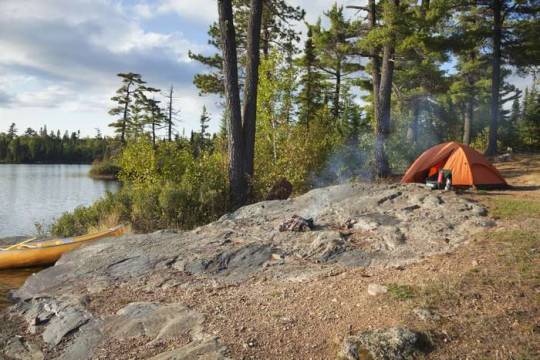
Camping, fishing, and canoeing are popular activities in Minnesota’s Boundary Waters Canoe Area Wilderness.© Daniel Thornberg/Dreamstime.com
The founder of modern recreational camping was Thomas Hiram Holding, who wrote the first edition of The Camper’s Handbook in 1908.

His urge to camp derived from his experiences as a boy: in 1853 he crossed the prairies of the United States in a wagon train, covering some 1,200 miles (1,900 km) with a company of 300. In 1877 he camped with a canoe on a cruise in the Highlands of Scotland, and he made a similar trip the next year. He wrote two books on these ventures. Later he used a bicycle as his camping vehicle and wrote Cycle and Camp (1898).

Hunters camping at Norcross Brook, north-central Maine, 1886.Library of Congress, Washington, D.C.
Holding founded the first camping club in the world, the Association of Cycle Campers, in 1901. By 1907 it had merged with a number of other clubs to form the Camping Club of Great Britain and Ireland. Robert Falcon Scott, the famous Antarctic explorer, became the first president of the Camping Club in 1909.
After World War I, Robert Baden-Powell, founder of the Boy Scouts and the Girl Guides,

became president of the Camping Club of Great Britain and Ireland, which fostered the establishment of camping organisations in a number of western European countries. In 1932 the International Federation of Camping and Caravanning (Fédération Internationale de Camping et de Caravanning; FICC) was formed—the first international camping organisation.
In North America individuals camped in the wilderness for recreation from the early 1870s, travelling on foot, on horseback, or by canoe; but there was no organised camping. Many organisations, such as the Adirondack Mountain Club (founded 1922), the Appalachian Mountain Club (1876), and the Sierra Club (1892), have catered to campers for a long time. However, the organisation of campers on a large scale did not develop until after World War II, when increased leisure time and the advent of camping with motorised vehicles caused a tremendous growth in the activity.

The majority of organised campers in North America belong to local clubs, but there are two large-scale national organisations in the United States (National Campers and Hikers Association and North American Family Campers Association) and one in Canada (Canadian Federation of Camping and Caravanning).
Individual camping is very popular in Australia and New Zealand, but organised facilities are relatively few compared with those in North America. Recreational camping continues to increase in popularity in Africa and portions of Asia.
Youth Camping
Organised camping of another kind started in the United States in 1861 with a boys’ camp, run by Frederick William Gunn and his wife at Milford-on-the-Sound for students of the Gunnery School for Boys in Washington, Conn. Its success was immediate and was repeated for 18 successive years. Other similar camps began to develop. The first girls’ camp was established in 1888 by Luther Halsey Gulick and his wife on the Thames River in Connecticut.
When the Boy Scouts of America was formed in 1910 by Ernest Thompson Seton, it incorporated camping as a major part of its program. Similar emphasis on camping was to be found in the Girl Guides (founded in Great Britain in 1910), the Camp Fire Boys and Girls (U.S., 1910), and the Girl Scouts (U.S., 1912; patterned after the Girl Guides). Most other organisations concerned with young people, such as the Young Men’s Christian Association (YMCA), the Young Women’s Christian Association (YWCA), and many others, also undertook camp development as an important part of their activities.

Juliette Gordon Low (left), founder of the Girl Scouts of America, speaking to Girl Guide leaders in England, 1920.Keystone/Hulton Archive /Getty Images
Modern Camping

All forms of camping, from primitive to motorised, continue to grow in popularity, particularly in the United States, Canada, and western Europe. Much of this growth is the result of the proliferation of campsites for recreational vehicles (RVs). In particular, many public and commercial campsites cater to RVs by setting aside paved parking regions in picturesque locations. Camping on public land is especially popular in the United States and Canada, where federal and regional government agencies strive to meet the burgeoning public demand. Commercial RV campgrounds typically have electrical and water hookups that provide most of the conveniences of home in an outdoor setting.
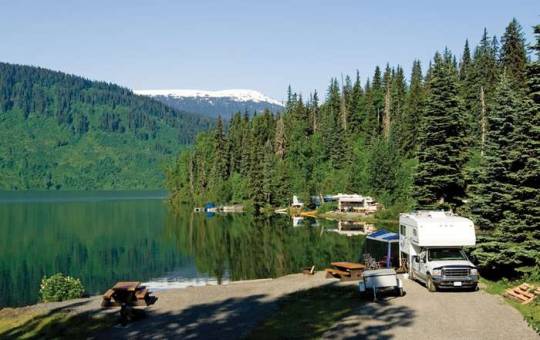
Recreational vehicle (RV) park in Alaska.© Natalia Bratslavsky/Shutterstock.com
There have been many technical advances in camping materials and gear. Lightweight nylon tents are easier to pack and set up than their canvas predecessors, they offer superior protection from rain, and they are also easier to carry, which has facilitated a boom in hiking and camping. Lightweight aluminum cookware and portable stoves have also reduced the overall weight of gear for primitive campers.
https://www.britannica.com/topic/camping
Thank you! Cool!😊❤️❤️❤️❤️🥺
6 notes
·
View notes
Video
Lockheed LC-130 "Skibird" repairs on the Ice by Robert Sullivan
Via Flickr:
PEGASUS FIELD, Antarctica- An LC-130 "Skibird" from the New York Air National Guard's 109th Airlift Wing is jacked up on the frozen ice shelf of Pegasus field 16 Jan 2014 after aircrew discovered a landing gear issue. The maintenance crews of the 109th Airlift Wing do not have hangars to work out of while deployed to Antarctica for Operation DEEP FREEZE and must work in the elements and handle unique challenges nearly every day. From Wikipedia, the free encyclopedia The Lockheed LC-130 is a ski-equipped United States Air Force variant of the C-130 "Hercules" used in the Arctic and Antarctic. Ten are currently in service with the 109th Airlift Wing of the New York Air National Guard. Design and development The LC-130 started as a prototype model developed by modifying a C-130A with skis in 1956. After testing in 1957, 12 additional C-130A models were modified with skis and hydraulics under the designation of C-130D. In 1959 the first four factory equipped, ski-based Hercules were produced under the Navy designation of UV-1L. These C-130's are USAF C-130B models. Later in the program the designation was changed from UV-1L to C-130BL. This designation was again later changed to LC-130F when aircraft nomenclature was standardized for all services by the U. S. Defense Department in 1962. These four aircraft were bought by the Navy Department to support the Navy's Antarctic expedition that was ongoing at the time. The Navy also bought one LC-130R model in 1968. The National Science Foundation bought the second set of aircraft as replacement aircraft. The Polar Program Division of the Foundation had assumed management of the Antarctic Program in the early 1970s. These aircraft were designated LC-130R and were delivered in two lots: the first lot of three in 1974 and the remaining two in 1976. The primary mission of the LC-130 is supporting the scientific community in Antarctica by transporting cargo and personnel from the McMurdo Station to field stations and camps, including the Amundsen–Scott South Pole Station. The aircraft are equipped with retractable skis that allow the aircraft to land on snow and ice as well as on conventional runways. The aircraft have provisions for using rocket-assisted-takeoff (RATO) rockets, four on each side of the aircraft, that are installed and used when the LC-130 operates from rough, unprepared snow surfaces, sticky snow or when shorter takeoff runs are needed. Originally the expended rocket bottles were jettisonable, but due to several accidents which occurred when a bottle detached from the aircraft during takeoff, the mounting provisions were changed so that the bottles could not be released in the air.
6 notes
·
View notes
